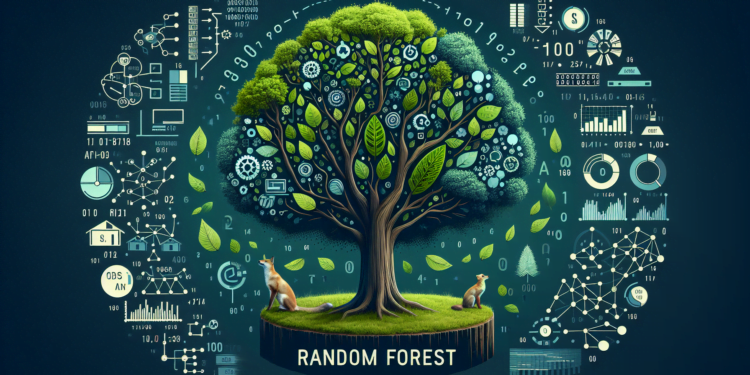The Random Forest algorithm, initially conceptualized by Tin Kam Ho in 1995 and later extended by Leo Breiman in 2001, has emerged as a paradigm in machine learning for classification and regression. This set of predictors, known as an ensemble learning method, capitalizes on the wisdom of the crowd by building multiple decision trees during training and outputting the majority class (classification) or average prediction/regression (regression).
Formally, a Random Forest consists of a set of decision trees $ { mathcal{T}1, mathcal{T}2, …, mathcal{T}N } $, where $N$ is the number of trees in the forest. Each tree $mathcal{T}i$ is trained on a bootstrap sample of the training data, and feature selection at each node is based on a random subset of features. This infuses high diversity among the trees, resulting in an increase in the overall robustness of the model against data variability and reduces variance without increasing bias, thus suppressing the overfitting inherent to a single decision tree.
On a mathematical level, the prediction of a Random Forest for a new data point $ mathbf{x} $ is obtained using the following expression:
$$
hat{y}(mathbf{x}) = frac{1}{N} sum{i=1}^N mathcal{T}i(mathbf{x})
$$
This elegant embodiment of the bagging principle (bagging) results in predictive performance that often exceeds more complex and delicate models, due to its highly parallelizable nature and relatively low susceptibility to data dimensionality.
Recent Advances and Practical Applications
Among the cutting-edge contributions to the development of Random Forests is work on model explainability and ensemble bias. New approaches to variable importance, based on permutations and shapley values techniques, have allowed for clearer deciphering of each feature’s contribution to classification decisions. This progress is particularly relevant in sectors such as precision medicine, where understanding the reasoning behind each prognosis is crucial.
In terms of practical applications, Random Forests have proven effective in detecting financial fraud, where the ability to model complex and nonlinear interactions between features is essential. A case study in the banking sector revealed that Random Forests, in comparison with neural networks and SVMs, provided better detection due to its robustness in scenarios with imbalanced and noisy datasets.
The Deep Forest, an advanced iteration of Random Forest that involves multi-layer structures of ensembles, is a promising new direction; it represents an effort to emulate the depth of neural networks while retaining the basic premise of Random Forest. Research in Deep Forest suggests that these models can, in certain cases, be comparable in performance with Deep Learning models, particularly in tasks where data is insufficient to train complex networks.
Projections and Future Innovations
The integration of Random Forests with deep learning techniques and the use of hybrid architectures represents the next frontier in machine learning algorithms. The enrichment of ensemble models with automatic feature learning and advanced optimization techniques is anticipated.
The ability to work with high-dimensional data will be enhanced by dimensionality reduction algorithms operating in a unified space with the classification model, taking feature learning and classification/regression towards symbiotic coevolution.
Considering the current direction of AI research and its application to general artificial intelligence (AGI), it is projected that Random Forests will play a unique role in hybrid AI systems where various machine learning techniques are combined to achieve a level of generalization and adaptability close to human cognition. In this context, Random Forests will serve as stable and reliable building blocks upon which more complex and dynamic architectures are constructed.
Conclusion
In summary, the Random Forest algorithm continues to evolve and adapt, maintaining its relevance in the pantheon of AI algorithms. Its simplicity, combined with effectiveness and versatility, keep it as an invaluable tool for data scientists and machine learning engineers, ensuring its presence in both the development of everyday practical applications and the advancement of research at the AI frontier. The near future will unveil new and innovative ways to employ these forests in the vast and growing field of artificial intelligence.






















